Seaweeds of the South African South Coast


Order Ceramiales
Family Rhodomelaceae
Polysiphonia namibiensis Stegenga et Engledow in Stegenga, Bolton et Anderson 1997: 550
Plants largely prostrate, apices erect. Erect part up to ca. 5 (-10) mm tall. Filament with 4 pericentral cells, without cortication. Creeping axes up to 175 µm in diameter, erect axes usually not exceeding 100 µm; segments in creeping filaments up to about as long as broad, in erect axes much shorter. Creeping filaments attached by unicellular haptera in open connection with the pericentral cells, usually at intervals of 2 or 3 segments. Laterals developing at intervals of 3 or 4 segments, the majority remaining determinate and unbranched, a minority developing into indeterminate branches.
Tetrasporangia in the lower half of the determinate branchlets, in a single row, each with two long and one short cover cell. Sporangia at maturity somewhat flattened, up to 60 µm broad and 45 µm tall. Male stichidia borne at the apices of indeterminate as well as determinate axes, 1 stichidium per segment. Stichidia up to ca. 250 µm long and 50 µm broad, usually with only one terminal sterile cell. Female specimens not seen on the south coast, but known from the west coast.
Collections, ecology and regional distribution
Recorded on the South African coast from Olifantsbos (west side of the Cape Peninsula) to the Kei Mouth area (17-43). This species is common in Torra Bay, Namibia, and “it is not known if it occurs between Namibia and the Cape Peninsula” (Stegenga et al. 1997). It occurs in the lower eulittoral and sublittoral fringe in wave-exposed areas.
World distribution: also recorded from Namibia (Stegenga et al. 1997).
Type locality: Hottentots Bay, Namibia (Stegenga et al. 1997).
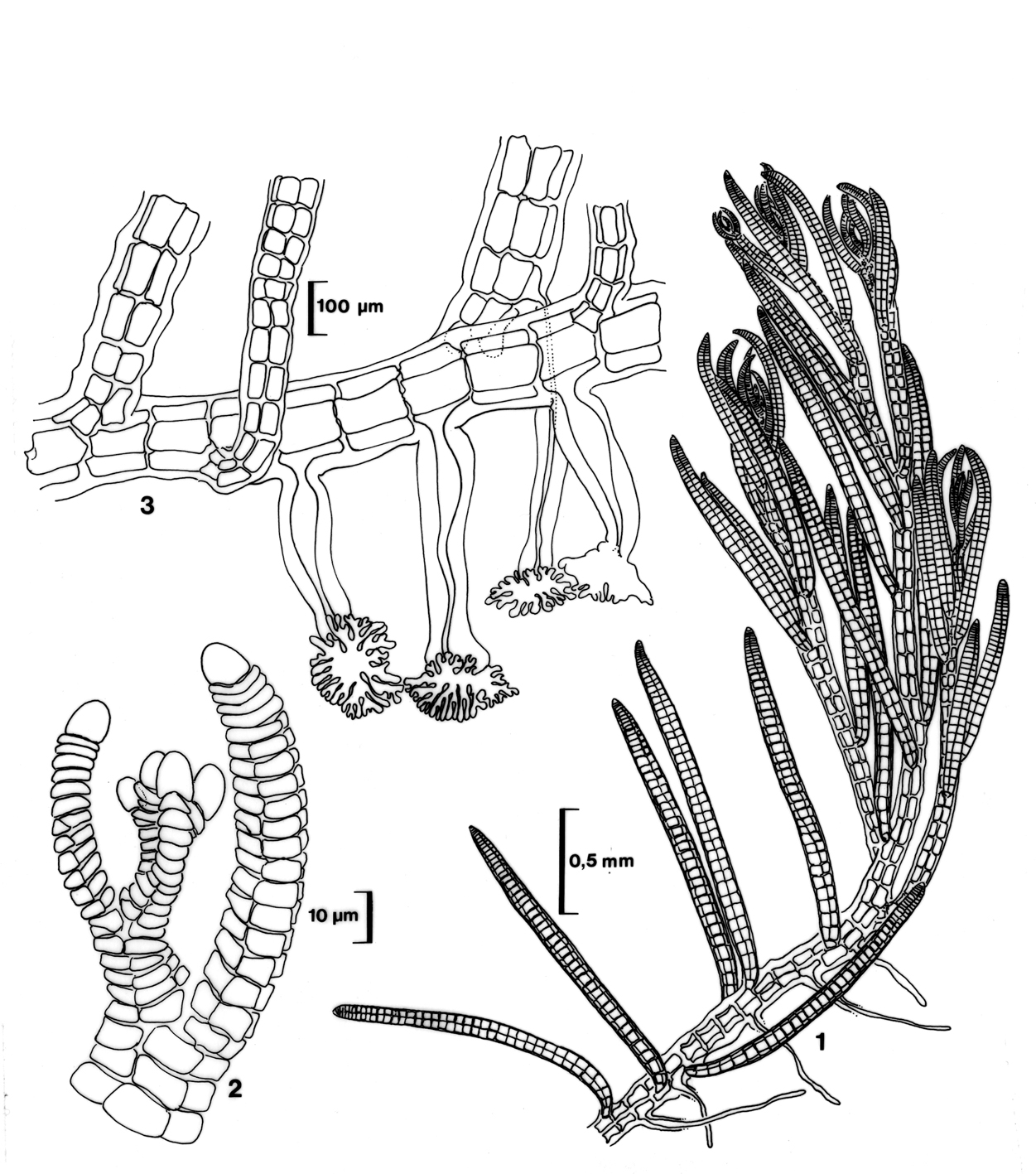
Polysiphonia namibiensis. 1. Microscopic habit. 2. Thallus apex. 3. Detail of prostrate axis with haptera and bases of laterals. (Reproduced from Stegenga et al. 1997).
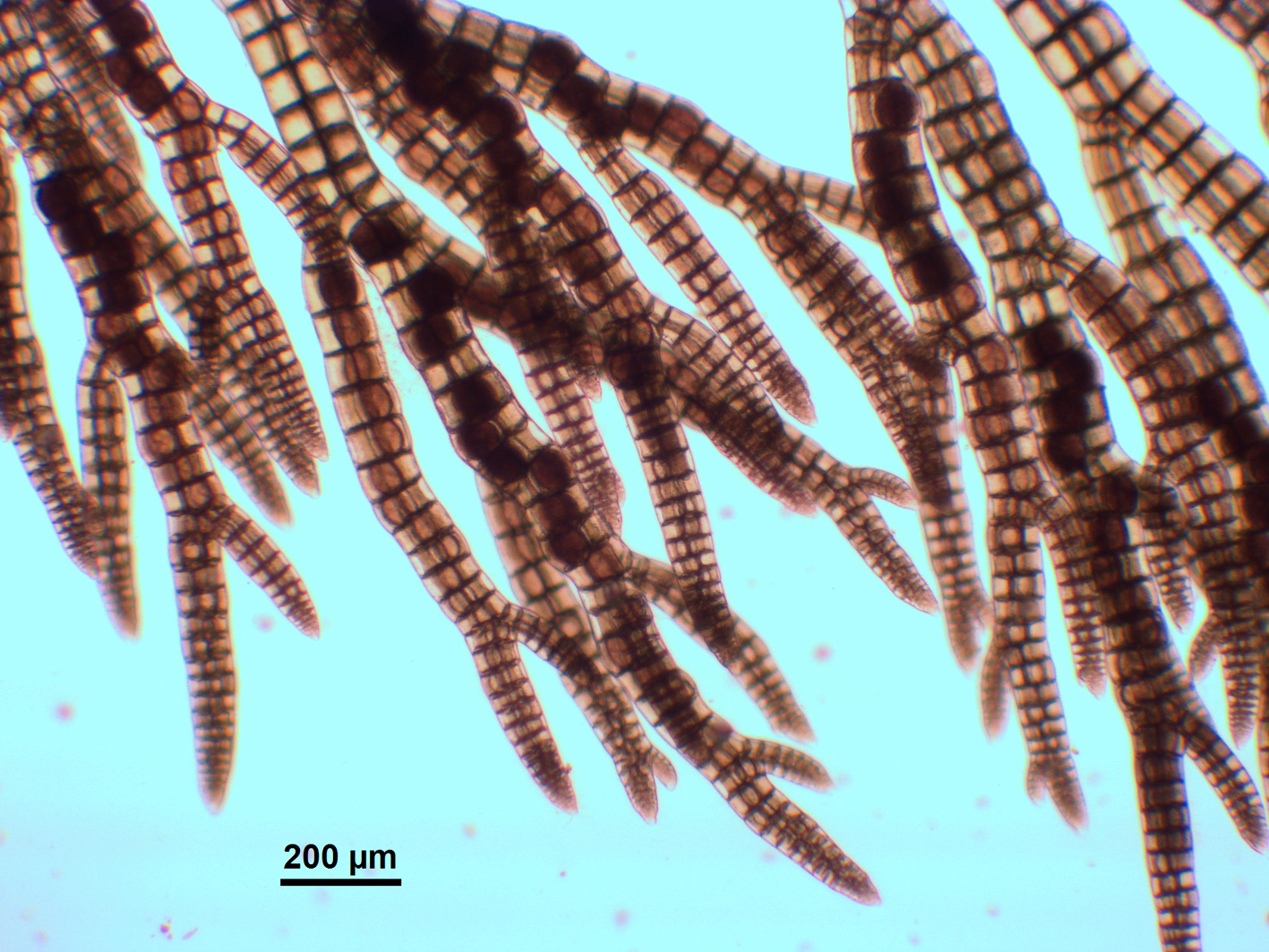
Polysiphonia namibiensis. Tetrasporangial thallus.
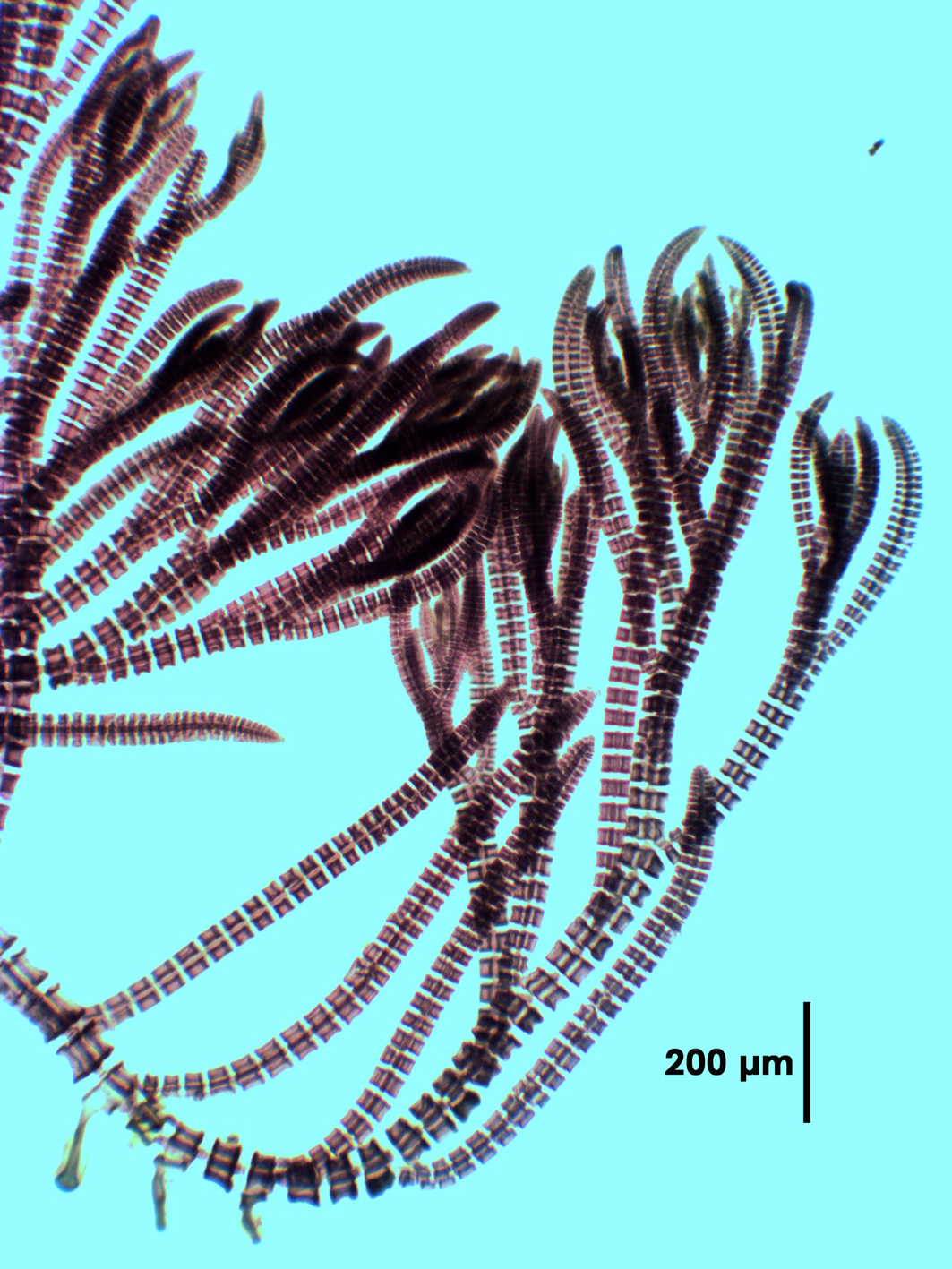
Polysiphonia namibiensis.

Polysiphonia namibiensis. Detail of prostrate axis showing rhizoids arising every 2-3 segments.
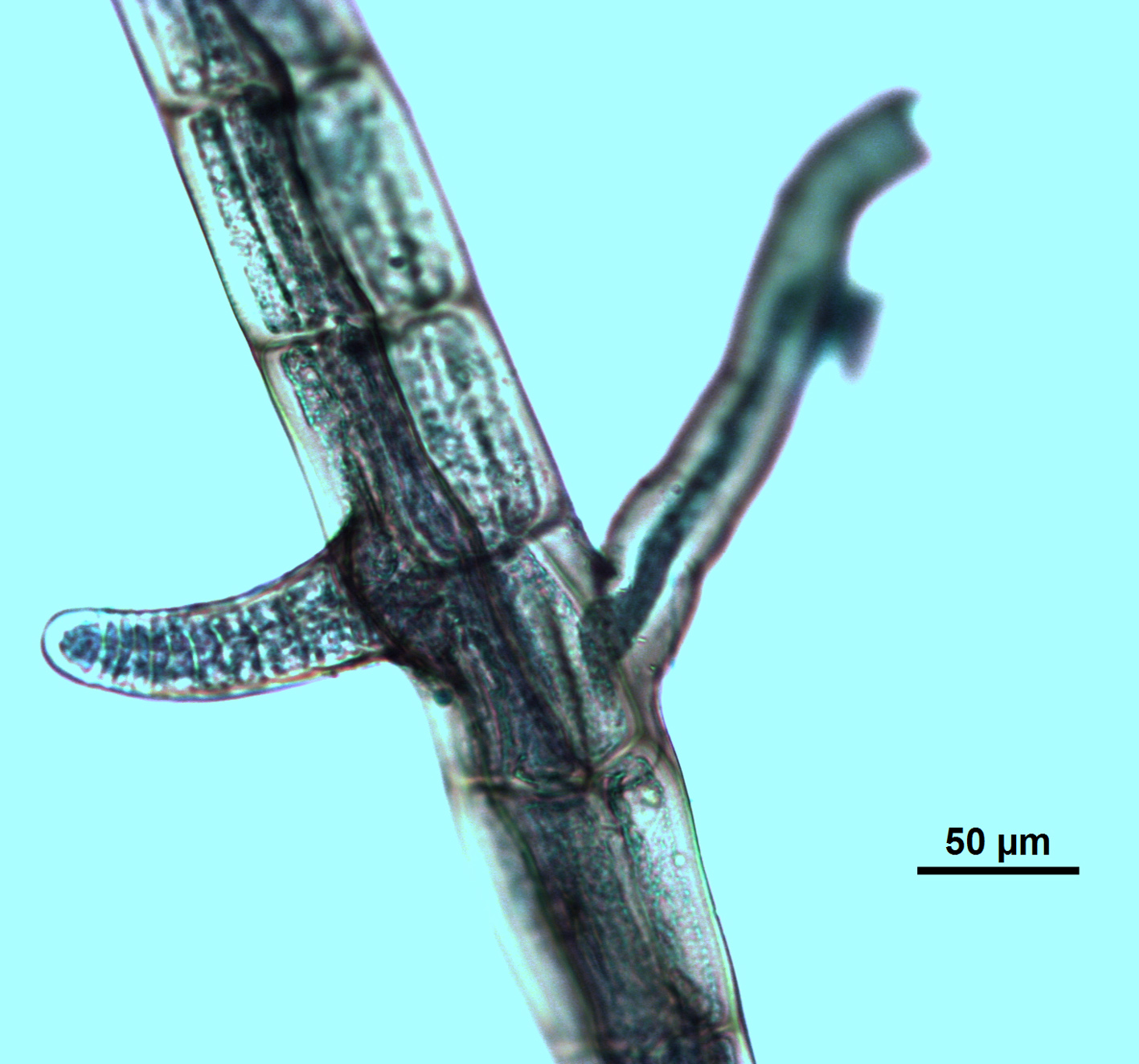
Polysiphonia namibiensis. Rhizoid (on right) originating from pericentral cell; young upright on left.
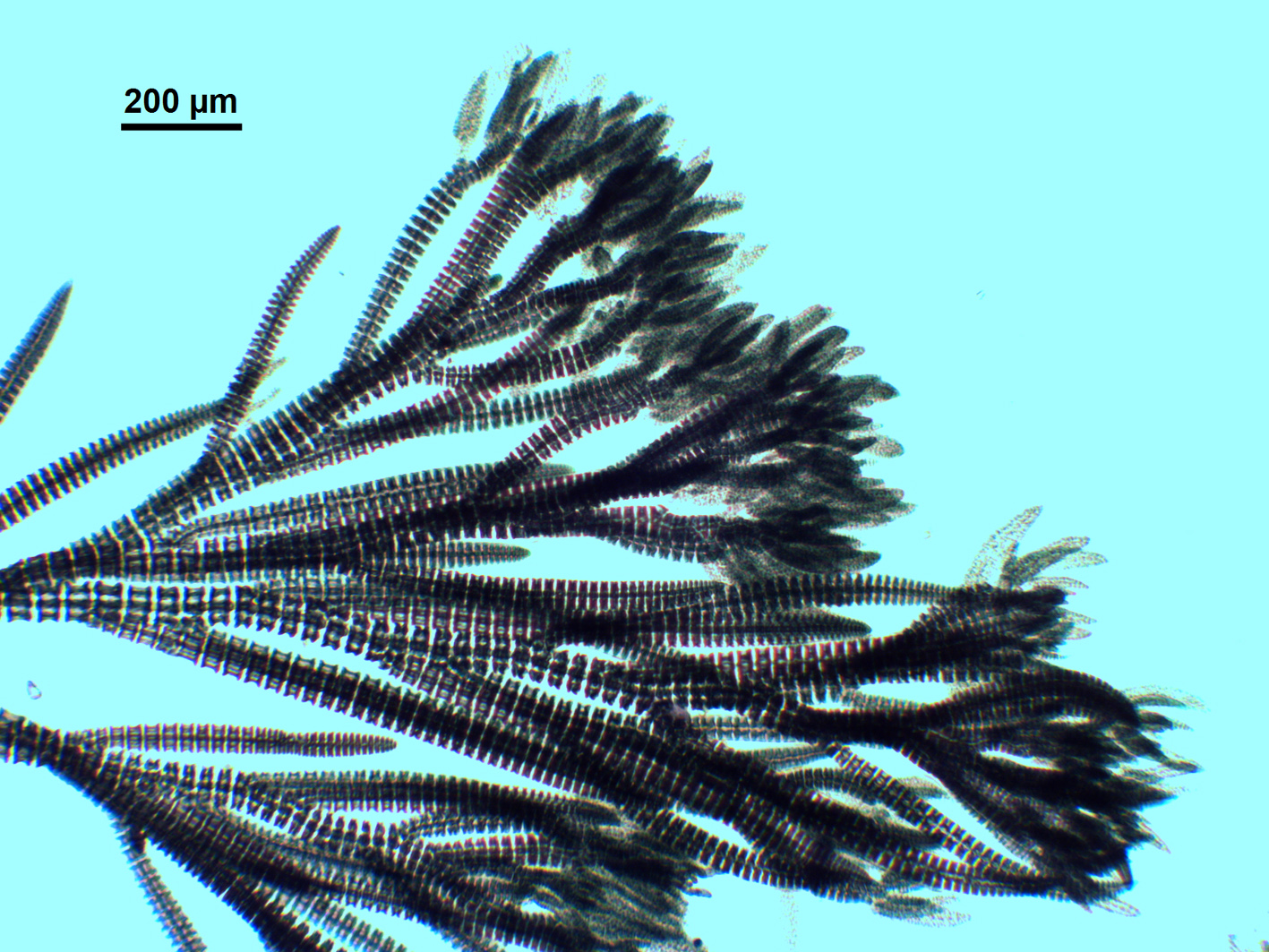
Polysiphonia namibiensis. Male thallus.
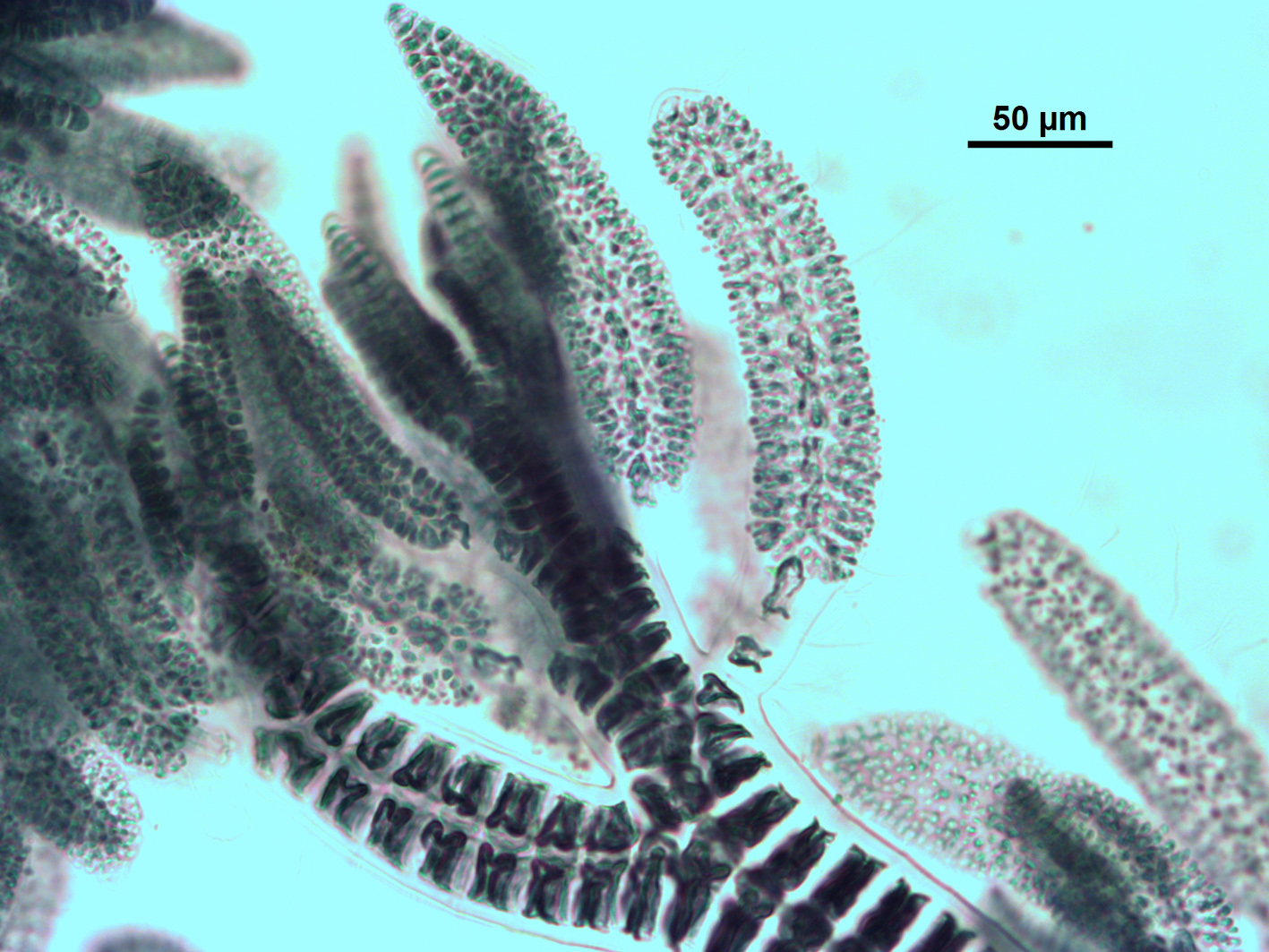
Polysiphonia namibiensis. Detail of spermatangial stichidia.
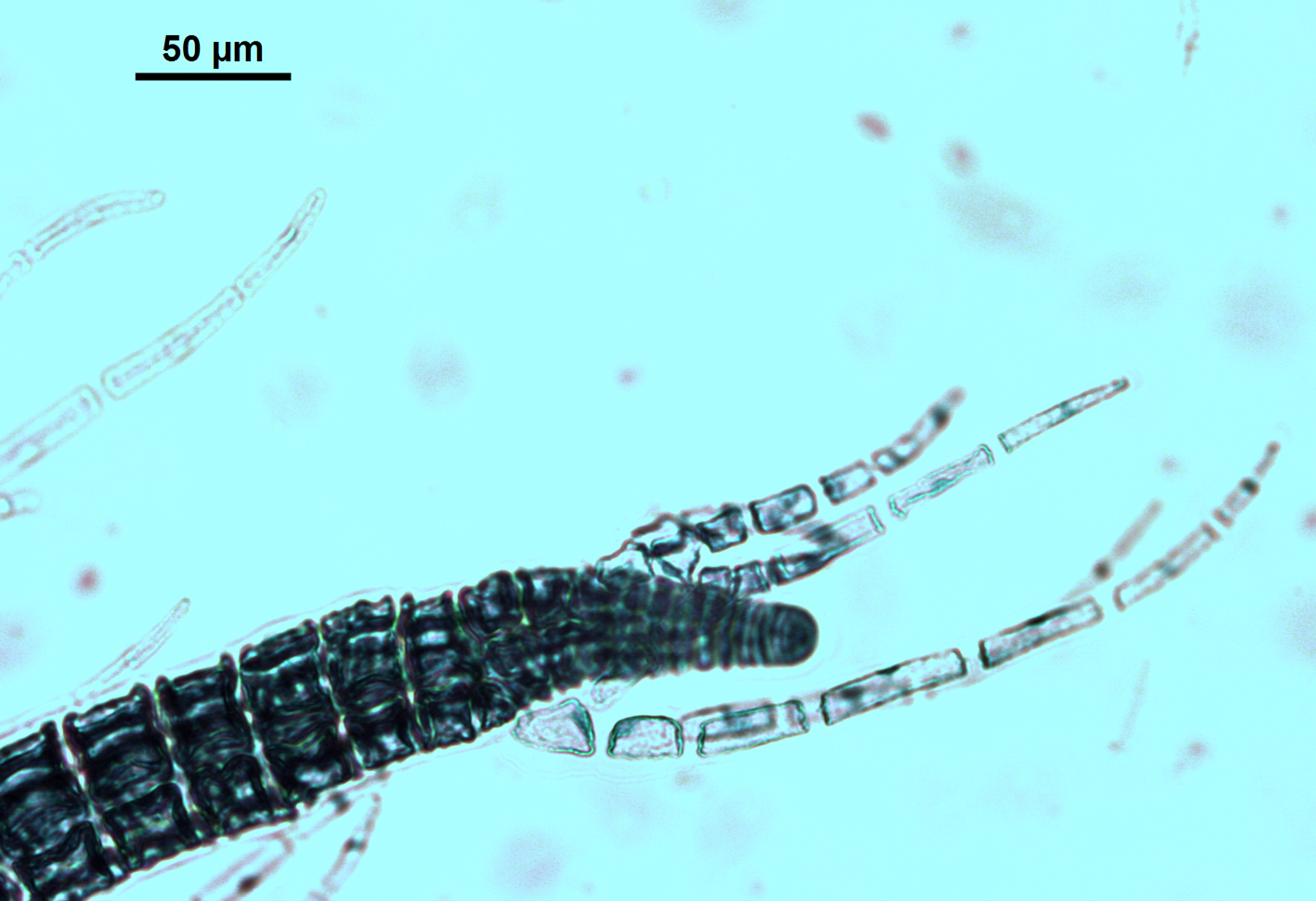
Polysiphonia namibiensis. Branch apex with trichoblasts.
References Polysiphonia namibiensis
Stegenga, H., Bolton, J.J. & R. J. Anderson. 1997. Seaweeds of the South African west coast. Contributions from the Bolus Herbarium 18: 655 pp.
Cite this record as:
Anderson RJ, Stegenga H, Bolton JJ. 2016. Seaweeds of the South African South Coast.
World Wide Web electronic publication, University of Cape Town, http://southafrseaweeds.uct.ac.za; Accessed on 29 December 2025.